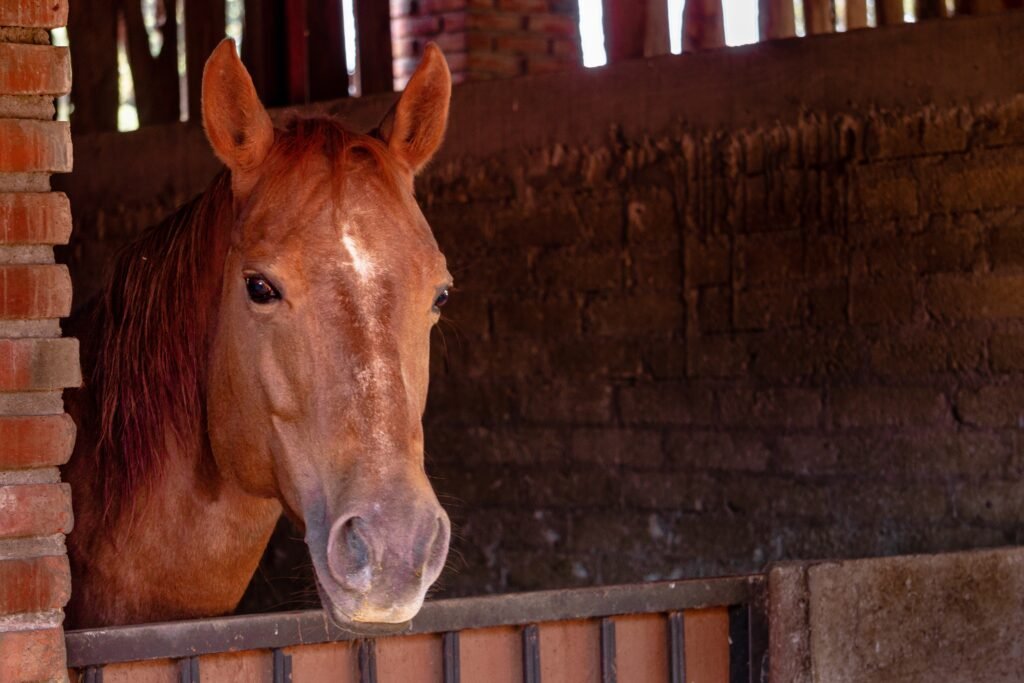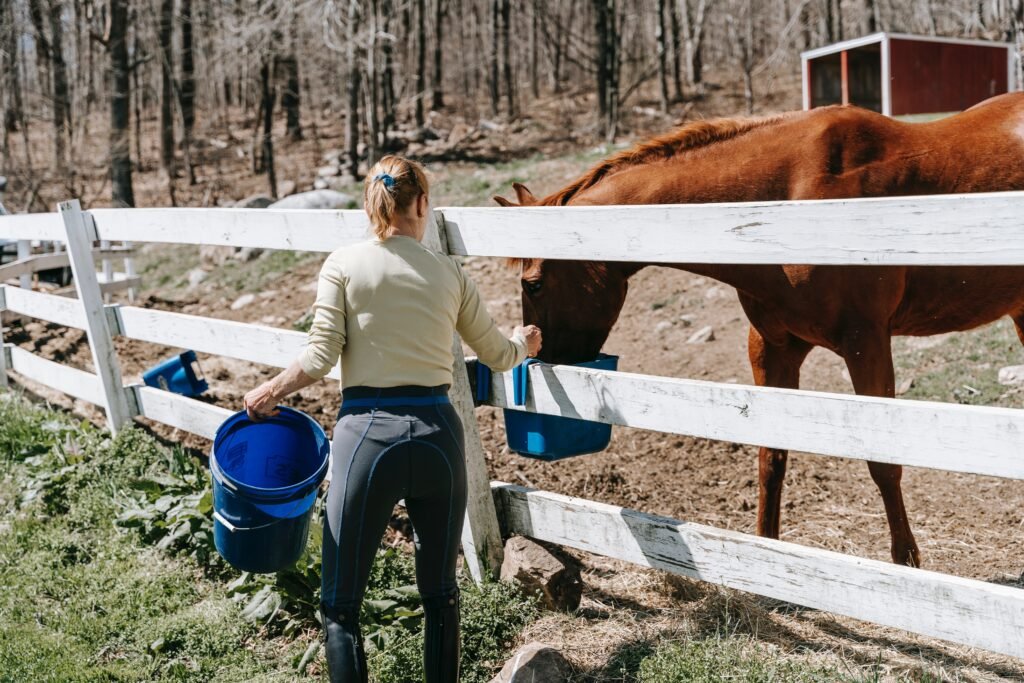How to Care for A Pet Horse?
Horses are sweet, loyal, and cuddly pets to have. They live up to 20 to 30 years. They recognize you, respond to you, and occasionally become angry with you like companions. The first and the most important rule I would say to own a horse is to make sure you have money to care for them! As they are pretty expensive pets to own. They also require extra care and maintenance as compared to any other pet. If you are going to buy a horse for the first time and you would like to know how to care for a pet horse, you are in the right place! Keep reading!!
Professional tips for caring for your pet horse

The first point I will talk about is what a pet horse should eat to properly care for.
Grass:
The main thing they eat is grass which is their diet in their natural wild habitat. The ideal sustenance of a horse comes from the grass because of the low sugar content in grass compared to grain. However, there are many different types of grass, and the sugar content of some grasses is higher than others. As the horse keeps on eating all day, the grass is a better option for them. Make sure it’s present abundantly so they can grace all day.
Hay:
The next thing your pet horse may eat is hay which comes in many different types and is dried grass. In winter, when natural grass dies off, hay is your horse’s primary source of sustenance. Since horses like to eat all day, hay is another low-sugar option for your pet horse to munch on.
It’s essential to purchase horse-quality hay, as the digestive system in horses is delicate. Any sudden changes will upset the balance, and colic can occur. Missing a meal won’t kill your horse, but lousy food will. So hay feed must be chosen with extra care.
Feeding grain:
Feeding grain that will benefit your horse’s diet and overall health is essential. However, not every horse needs grain, as grains are higher in sugar and can be unnatural for some horses to digest. While for some horses, grains serve as food that helps to sustain their healthy weight. It’s better to talk to a Vet to decide what your horse needs to eat.
Supplements and electrolytes:
If your horse is working hard every day or has a rigorous routine, supplement his diet with grains, electrolytes, and other supplements to properly care for a pet horse.
Other important things to know about their feeding habits:
- A horse cannot tolerate abrupt changes to feed, become sick, or die. So make feed changes gradually.
- The horse must not be fed enough to become fat nor so little that he becomes thin. The person caring for the horse must develop his ‘eye’ for what is too skinny and fat.
- Horses cannot tolerate moldy feed or coarse feed. So, cattle and sheep feed are not suitable for them.
- Much fresh grass can kill a horse, especially when flushed with spring growth or growth after heavy rain. Horses must not be permitted to eat all the lush grass they want.
Another thing that your horse needs to survive is water.
Horses need between 5 to 10 gallons of water a day, so ensure your horse has enough clean water to get them through their day. In winter, the water bucket freezes, so have a water heater to keep the water unfrozen. Dehydration leads to health issues like colic and even death, so an important in care for a pet horse is to keep them hydrated by providing them adequate water supply and having access to it both in summer and winter. This is the right way to care for a pet horse to keep them hydrated.
Let’s talk about some options for where to keep your pet horse.
In order to care for a pet horse, we must keep in mind that horses are naturally wild, freely roam wherever they want, and keep moving throughout the day. They don’t like to stand still for long and like to keep moving and grazing 24/7. However, they must have an adequate shelter, like a running shed or stall with a large door to keep them safe in bad weather. Stalls can also be a place to stand inside and get a fan blown on them in hot weather. But remember that the horse’s natural habitat is out in the wild where they can roam. So, providing them with an adequate place to roam freely is a smart move.

If your horse does live in a stall, it must get turnout, at least once a day.
Keeping your horse in the stall is opposite to how they live in the wild. That is why some horses can get stocked up their legs if they are standing for too long in a stall, or it can cause their joints to lock up. So provide your pet horse opportunities to exercise and get moving to properly care for them.
Ways to exercise your horse
There are many other ways to ensure your horse stays healthy and gets the exercise they need.
Riding them:
One of the best options is to ride them. Riding provides your horse with a great way to exercise.
Lunge them:
Another thing you can do to provide exercise opportunities to your horse is lunged them. This is a great way to work without riding on horses when the weather is not suitable for riding.

Pieces of equipment you will need to perform primary horse care
Halter and a lead rope: One of the most prominent and essential things is a halter in your horse’s head and a lead rope. So you can catch them and lead them around. You also need a body brush to clean your horse daily, plus hoof picks to pick out dirt and debris from their feet.
Horse grooming is a necessary part to care for a pet horse
For grooming, bring your horse out of the stall and tie it up in the grooming area so it cannot get away.
- Consider wearing clothes before doing a messy job of horse grooming.
- I am using a rubber curry brush in a circular motion to loosen up the dirt from the horse’s body.
- To remove the dirt from the horse coat, use a dandy brush in short, rapid strokes.
- Now use a body brush to make the horse coat shiny and smooth.
- If you find an area in a horse coat that needs trimming, use an electric trimmer to neat them. Skip this step if all is already neat.
- Gently comb the mane and tail to untangle the hairs. Avoid combing the mane and tail daily; otherwise, they become too thin.
- If your horse needs extra cleaning, rinse the dirt using warm water, and shampoo is a good option. Use a mild conditioner afterward to make the horse coat smooth and shiny.
Horses health care tips
Horses’ feet are crucial and need daily cleaning.
Not only does your horse walk on their feet 24/7, but it also helps it circulate nutrients and blood throughout its body. So ensure your horse’s feet stay healthy by simply cleaning them daily. Check their hooves for any rock or debris that may be stuck in them and for any damage or swelling.
Trim their hooves regularly.
Horses need their feet trimmed more often In summer because the hooves are going through more trauma and absorb all water, making them grow faster. While in winter, horses’ hooves get dry and won’t grow faster.
Feet shoes
Shoeing your horse’s feet can cause problems with the hooves rather than protecting them. You can use horseshoes when the horse’s feet are injured but first, talk to the vet.
Clean the horse stall at least once a day:
If your horse is standing in their waste for too long, it can cause severe health problems with its feet. So keep the horse stall clean and friendly for them to live in.
Take your horse to the vet regularly.
Schedule regular physical and dental checkups with a vet to ensure your horse is healthy and up to date on her vaccination. Horses also need to be dewormed regularly.
This is all about how to care for a pet horse.
Look into “howtothing.net” detailed pages about care for dogs, cats, hamsters, and birds to get more information.


